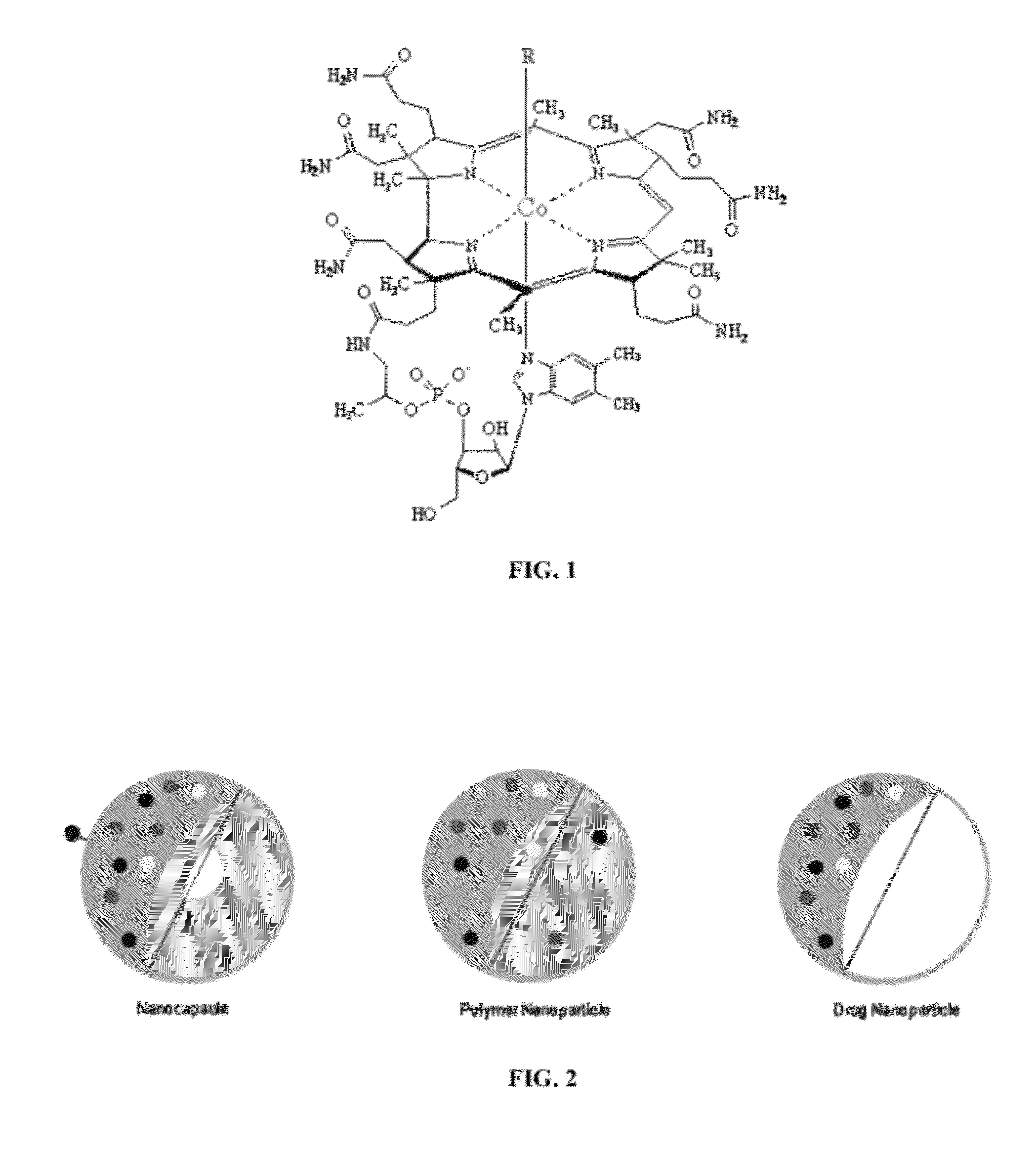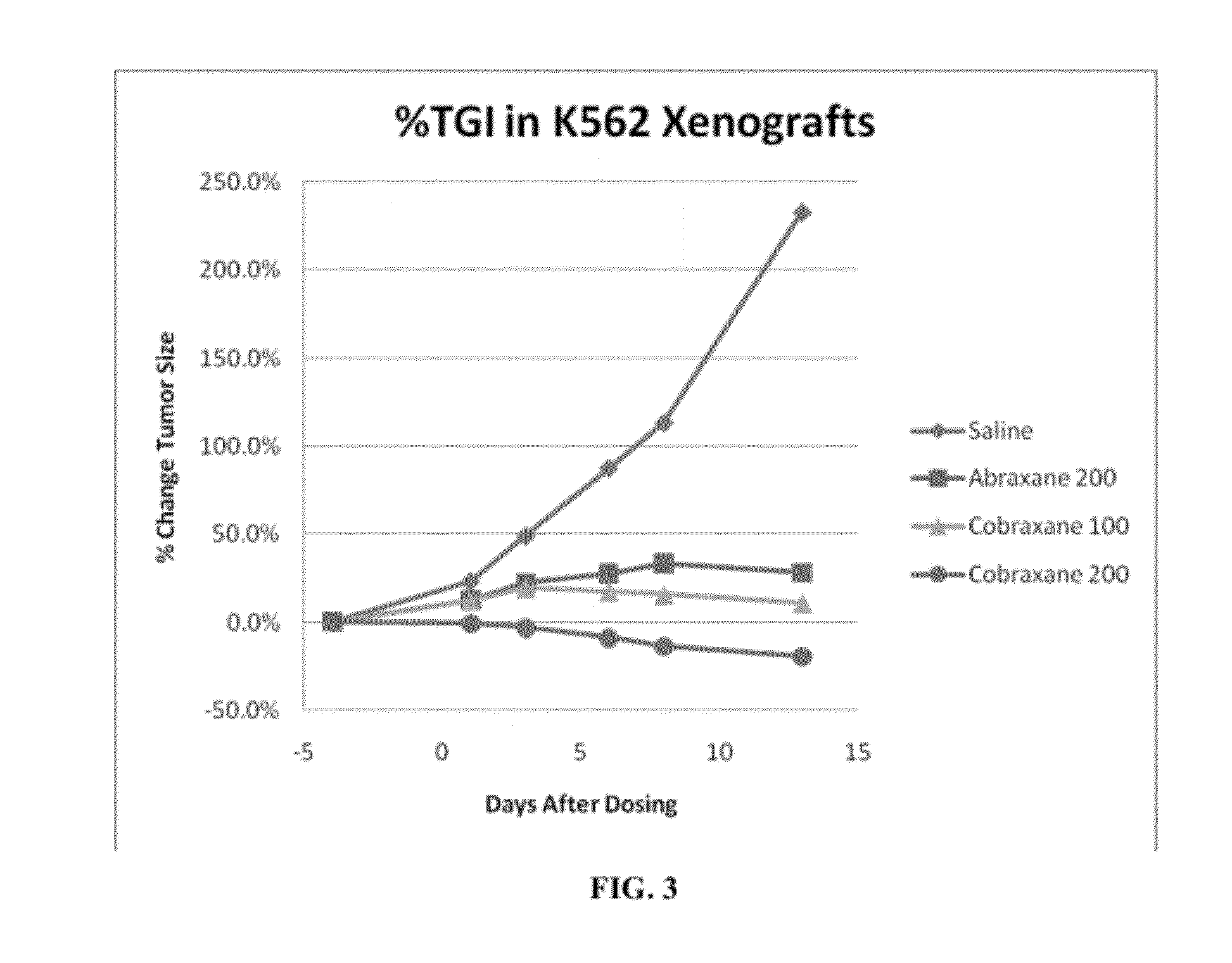Targeted Nanocarrier Systems for Delivery of Actives Across Biological Membranes
a technology of biological membranes and nanocarriers, which is applied in the direction of powder delivery, microcapsules, drug compositions, etc., can solve the problems of drug development challenges, drug development that may show significant promise in early testing, and may not be accessible by many pharmaceutically-active compounds
- Summary
- Abstract
- Description
- Claims
- Application Information
AI Technical Summary
Benefits of technology
Problems solved by technology
Method used
Image
Examples
experimental examples
Example 1
Synthesis of Dextran Succinate (DS)
[0255]70 kDa Dextran (10 g) was stirred in dry dimethylsulfoxide (100 mL) and pyridine (15 mL). Succinic anhydride (1.54 g) was added and the mixture, which became a homogenous solution after 1 hour, was stirred at room temperature under argon for 16 hours. The solution was poured into stirred ethyl acetate (400 mL), and then acetone (400 mL) was added and stirring was continued for 16 hours, during which the pasty precipitate eventually became granular. The precipitate was filtered, washed with ethyl acetate and dried under vacuum to afford a white solid, which was dissolved in water (250 mL). The aqueous solution was acidified with dilute HCl to pH 2 and 5× diafiltered with water using a 0.1 m2 TFF (tangential flow filtration) module with a 5 kDa MWCO membrane. The solution was then concentrated to ˜50 mL by TFF and lyophilized to afford dextran 20% succinate as a white solid (10.2 g). 1H NMR analysis confirmed that the product contained...
example 2
Synthesis of 70 kDa VB12-Dextran Succinate Conjugate
[0256]70 kDa Dextran succinate of Example 1 (200 mg) and aminohexyl-VB12 (20 mg; J F McEwan et al, Bioconjugate Chem. 1999, 10, 1131-1136) were dissolved in water (8 mL). 1-Ethyl-3-(3-dimethylaminopropyl) carbodiimide hydrochloride (200 mg) and N hydroxysuccinimide (200 mg) were added and the solution (pH 5.5) was stirred for 16 hours. The mixture was centrifuged in a 5 kDa Amicon 15 centrifugal filter at 3800 rpm for 45 min. Water (15 mL) was added to the retentate and centrifuged; then the 15 mL wash was repeated once more. The washed retentate was lyophilized to afford Cob-DS (223 mg) as a pale red solid. UV-VIS spectrophotometric analysis revealed the product contained 3.25% w / w of VB12, which corresponds to ˜0.5 equivalents of AH-VB12 per 100 anhydroglucose units (0.5 mol % VB12).
example 3
Synthesis of 70 kDa Carboxymethyl Dextran
[0257]A solution of 70 kDa dextran (4.0 g) in 11% sodium hydroxide (20 mL) was added to a solution of chloroacetic acid (2.3 g) in tert butanol (40 mL) and the biphasic mixture was stirred vigorously at 60° C. for 3 hours. After cooling to room temperature, the mixture was poured into stirring acetone (400 mL) and the resulting pasty precipitate was separated by decantation. The paste was dissolved in water (25 mL) and poured into stirring methanol (300 mL) and the resulting white precipitate was filtered, washed with methanol and dried under vacuum. The crude product was dissolved in water and 5× diafiltered with water using a 0.1 m2 TFF (tangential flow filtration) module with a 5 kDa MWCO membrane. The solution was then concentrated by TFF and lyophilized to afford a white solid (4.6 g). 1H NMR analysis revealed that the product contained 0.2 carboxy-methyl equivalents per anhydroglucose unit (20% carboxymethylation).
PUM
| Property | Measurement | Unit |
|---|---|---|
| Fraction | aaaaa | aaaaa |
| Fraction | aaaaa | aaaaa |
| Fraction | aaaaa | aaaaa |
Abstract
Description
Claims
Application Information
 Login to View More
Login to View More - R&D
- Intellectual Property
- Life Sciences
- Materials
- Tech Scout
- Unparalleled Data Quality
- Higher Quality Content
- 60% Fewer Hallucinations
Browse by: Latest US Patents, China's latest patents, Technical Efficacy Thesaurus, Application Domain, Technology Topic, Popular Technical Reports.
© 2025 PatSnap. All rights reserved.Legal|Privacy policy|Modern Slavery Act Transparency Statement|Sitemap|About US| Contact US: help@patsnap.com


